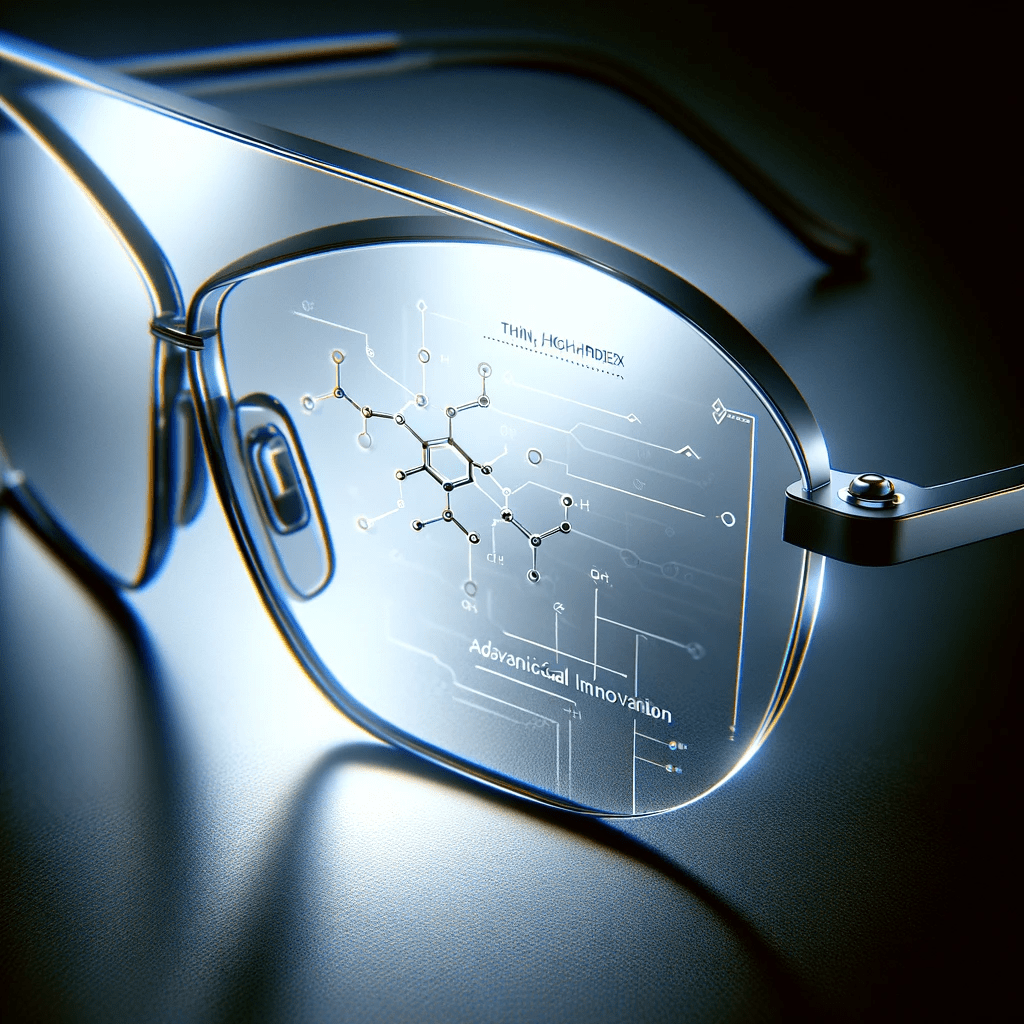9 Breakthroughs in Sunglass Lens Material Technology
Breakthroughs in Sunglass Lens Material Technology: As the master of my visual domain, I’ve witnessed a sea change in the realm of sunglass lens material technology. These nine breakthroughs aren’t just upgrades; they’re the key to unlocking unparalleled visual prowess.
High-index materials have slimmed down the profile of my lenses, ensuring I carry the look of success without the weight.
Photochromic advancements have given me the power to adapt instantly to changing light conditions, while blue light filters shield my eyes from digital fatigue, keeping me sharp and focused.
With improved anti-reflective coatings, I command attention, free from distracting glare.
The incorporation of smart technology into lenses means I’m not just looking ahead, I’m living it.
Every innovation serves my ambition, providing me with the tools to dominate the day with clarity and confidence.
Key Takeaways
- High-index lens materials offer thinner and lighter options without sacrificing optical quality.
- Advanced anti-reflective coatings significantly enhance visual clarity by mitigating glare.
- Blue light filtering innovations contribute to enhanced ocular health and an empowered, productive lifestyle.
- Sustainable lens materials, such as bio-based and recycled materials, reduce environmental impact and support a circular economy.
High-Index Lens Materials

Since their introduction, I’ve found that high-index lens materials mark a significant advancement in sunglass lens technology, offering wearers noticeably thinner and lighter options without sacrificing optical quality. As someone who demands top-tier performance and aesthetic refinement, I can attest that these innovative materials have transformed personal eyewear from mere vision correction tools into statements of sophistication and power.
The technical prowess of high-index materials lies in their superior refractive index. This index, being higher than that of traditional lens materials, allows for a condensed lens profile even in cases of high prescriptions. The result is a lens that not only surpasses its predecessors in slimness but also in the ease with which it integrates into a high-end lifestyle.
Moreover, high-index lens technology doesn’t merely capitalize on elegance; it enhances visual acuity. The meticulous engineering behind these lenses minimizes distortions, providing an optical clarity that’s indispensable for individuals who can’t afford to miss a detail. This level of precision fuels the relentless pursuit of excellence that resonates with my professional ethos.
Enhanced Photochromic Lenses

As I explore the realm of enhanced photochromic lenses, I’m particularly intrigued by their accelerated transition times. These lenses not only adapt more swiftly to changing light conditions, but they also extend superior UV protection, crucial for ocular health.
Harnessing innovations like the Transitions® Signature® GEN 8™, we’re witnessing a significant leap in the performance and utility of photochromic lens materials.
Faster Transition Times
I’ve noticed that the latest photochromic lenses, like the Transitions® Signature® GEN 8™, now boast significantly faster transition times, adapting to light changes almost instantly. This quantum leap is a testament to the sophistication of how these lenses are made, utilizing cutting-edge compounds that react swiftly to UV light.
| Generation | Transition Time (Dark to Clear) | Adaptation Technology |
|---|---|---|
| GEN 6 | Moderate | Standard Photochromic |
| GEN 7 | Improved | Advanced Photochromic |
| GEN 8 | Rapid | Ultra-Responsive |
Analyzing the progression, it’s clear that the innovation in photochromic materials has been groundbreaking. The power to shift from dark to light settings expeditiously is a game-changer for lens wearers. As we delve deeper into the technical prowess of these lenses, we anticipate not just speed but also enhanced UV protection in our next discussion.
Improved UV Protection
How do these advanced photochromic lenses offer more than just speed, enhancing UV protection for our eyes? It’s not just about the rapid darkening; these lenses are a fortress against UV aggression. The Transitions® Signature® GEN 8™ lenses are a testament to this evolution.
As someone who values both function and form, I recognize that these lenses aren’t merely reactive to sunlight; they’re proactive in shielding our vision. They adapt seamlessly, offering a dynamic barrier that’s always at the ready, whether I’m indoors or under the harsh midday sun.
My prescription glasses now come equipped with this innovative armor, ensuring my eyes are protected with a precision that matches the demands of an ever-changing environment. This is more than convenience; it’s a strategic enhancement to ocular defense.
Blue Light Filtering Innovations

In recent years, I’ve observed a significant advancement in blue light filtering innovations that are transforming sunglass lens material technology. These materials exemplify a strategic intersection of optics and wellness, selectively shielding the eyes from harmful blue light wavelengths notorious for their contribution to digital eye strain and disrupted circadian rhythms.
The imperative to mitigate these adverse effects is clear, especially as screen time escalates across our digitally-dominated landscape.
Essilor’s Crizal® Prevencia® stands at the forefront, emblematic of the evolution in blue light filtering efficacy. This material isn’t simply a barrier; it’s a sophisticated filter, meticulously engineered to maintain visual acuity while curtailing the insidious blue light spectrum. It acknowledges the dichotomy of our environment—welcoming beneficial light and rejecting the detrimental.
I recognize that the augmentation of these innovations is a power play in the eyewear industry. By integrating blue light filtering capabilities into sunglass lenses, we’re not just offering protection from the sun. We’re providing a fortified defense against the pervasive glow of screens, thus contributing to enhanced ocular health and, by extension, an empowered, productive lifestyle.
The implications are profound—this isn’t just about comfort; it’s about command over one’s visual and overall well-being.
Advanced Anti-Reflective Coatings

I’ve observed that the latest anti-reflective coatings vastly enhance visual clarity, significantly mitigating glare which is paramount for optimum sunglass performance.
These improvements aren’t just superficial; the coatings’ durability has been bolstered, resisting scratches and extending the lifespan of lenses.
Moreover, advancements have also led to superior hydrophobic and oleophobic properties, ensuring lenses remain clear with minimal maintenance.
Enhanced Visual Clarity
Consistently, I’m impressed by how the latest anti-reflective coatings on sunglasses significantly enhance visual clarity. This isn’t just a minor improvement; it’s a quantum leap in lens technology that empowers users with an uncompromised view of the world.
- Advancements in Anti-Reflective Coatings:
- Durability: The integration of scratch-resistant features ensures longevity, meaning a consistent, clear vision for the user.
- Maintenance: Incorporating hydrophobic and oleophobic properties, these coatings repel water and oils, keeping the lenses pristine.
Zeiss DuraVision® Platinum exemplifies this innovation, offering a superior anti-reflective coating that’s not only robust but also maintains cleanliness, providing users with an unobstructed and sharp visual experience.
Analyzing the technical aspects, these coatings are a testament to the relentless pursuit of enhancing the power of sight.
Glare Reduction Improvements
While exploring the latest advancements in sunglass lens technology, I’ve discovered that the new generation of anti-reflective coatings dramatically improves glare reduction, ensuring that my outdoor experiences are free from distracting reflections.
| Feature | Benefit |
|---|---|
| Enhanced Durability | Resists scratches, prolonging lens integrity. |
| Hydrophobic Properties | Minimizes water spots for clear vision in rain. |
| Oleophobic Advancements | Repels oils, reducing smudges from skin contact. |
| Zeiss DuraVision® Platinum | Sets a high benchmark for glare reduction improvements. |
The technical prowess of these coatings is not just in preventing unwanted glare; their innovative nature lies in their capacity to maintain optical clarity amidst environmental challenges. Dominating the field, products like Zeiss DuraVision® Platinum offer a paradigm shift in visual performance, empowering users with unyielding clarity and control over their visual domain.
Durability of Coatings
As I delve into the resilience of modern sunglass coatings, it’s clear that the latest anti-reflective technologies aren’t just about combating glare but also about providing superior durability against wear and tear. When discussing the durability of coatings, one must consider:
- Scratch resistance
- Advanced coatings now feature a harder surface
- Resilience to minor abrasions enhanced
- Cleanability
- Hydrophobic and oleophobic properties
- Less maintenance and pristine clarity over time
Take Zeiss DuraVision® Platinum, for instance; it exemplifies the zenith of these advancements, reducing lens surface reflections while offering robust protection. The innovation in this arena signifies not only an evolution in visual acuity but also a commitment to longevity, ensuring that power and performance aren’t transient but enduring.
Progress in Polarization Technology

My investigation into the industry’s latest advancements reveals significant progress in polarization technology, enhancing both the safety and experience of sunglass wearers. The current generation of polarized lenses stands at the forefront of optical innovation, with a marked improvement in glare reduction and UV protection. This is a game-changer for those who demand uncompromised visual performance in challenging light conditions.
Let’s delve into the technical enhancements that have been made:
| Feature | Previous Generation | Current Technology |
|---|---|---|
| Glare Reduction | Effective | Highly Superior |
| UV Protection | Standard | Advanced |
| Visual Comfort | Moderate | Significantly Enhanced |
Advanced polarization technology in lenses is not just about reducing glare; it’s about crafting an experience where clarity is king and eye strain is dethroned. This progress in polarization technology ensures that visual comfort is optimized, providing a strategic edge for those engaged in high-stakes activities, be it driving, water sports, or outdoor adventures.
The industry is witnessing a surge in demand for lenses that don’t just protect, but also empower the wearer with unrivaled visual acuity. As I shift my focus to the next frontier, I’ll explore how breakthroughs in impact resistance are setting new benchmarks in sunglass durability.
Breakthroughs in Impact Resistance

In today’s exploration of sunglass lens advancements, the industry’s breakthrough in material technology has notably enhanced the impact resistance of eyewear, offering athletes and active individuals unparalleled protection and durability. The relentless push for superior materials has yielded products that aren’t just resilient but also integral to eye safety during high-risk activities.
Advanced materials:
- High-tech plastics: These polymers have transformed lens durability, absorbing and dispersing forces upon impact far more effectively than traditional materials.
- Protection and performance: The synthesis of sturdy materials ensures that lenses maintain clarity and precision, even under duress, safeguarding vision without compromising on optical excellence.
It’s clear that the drive for impact resistance hasn’t simply tweaked the status quo; it has revolutionized it. Eyewear can now withstand high-velocity encounters, blunt trauma, and all manner of environmental hazards. This is a game-changer for anyone demanding both peak performance and peace of mind.
The technical prowess embedded in every pair of these advanced sunglasses is a testament to the relentless pursuit of both safety and functionality. It’s not just about withstanding impact; it’s about empowering wearers to face the elements head-on, confident in the protection their eyewear provides.
Smart Adaptive Lens Technologies

I’ve delved into the realm of smart adaptive lens technologies, where innovative materials respond to changing light conditions, enhancing vision and user experience. Augmented reality (AR) lenses epitomize this technological leap, overlaying digital data onto our real-world panorama with seamless precision. These lenses aren’t mere passive filters; they’re dynamic, interactive portals to a hybridized digital-physical existence.
Leveraging AR, smart lenses become formidable tools, transforming mundane realities into data-rich environments. Imagine, for instance, gamers navigating virtual battlefields with real-time strategic overlays or surgeons accessing vital stats without diverting their gaze from the procedure at hand. These applications demand not only technical finesse but also a bold reimagining of our interaction with the world.
Furthermore, embedded sensors in smart lenses track our physical exertions, nudging us towards healthier lifestyles. This integration of wellness metrics with our daily visual experience exemplifies the confluence of technology and personal empowerment. As we embrace these smart adaptive lens technologies, we’re not just enhancing our sight; we’re augmenting our very capabilities.
Harnessing the power of innovation, we now pivot to explore how these technological marvels harmonize with our planet’s well-being in the subsequent section on ‘sustainable eco-friendly materials’.
Sustainable Eco-Friendly Materials

As we transition from smart adaptive technologies, I’m now turning my attention to the emerging world of sustainable eco-friendly materials in sunglass lens production. This shift isn’t just a nod to environmentalism; it’s a powerful move towards responsible innovation and long-term resource efficiency.
- Bio-based Materials:
- Derived from Renewable Resources: The incorporation of materials like castor oil exemplifies an innovative approach to reducing our dependence on fossil fuels.
- Minimizing Carbon Footprint: Utilizing plant-based substances significantly lowers the environmental impact during production.
The technical prowess behind manufacturing lenses from bio-based materials is impressive. It affords me, and other industry leaders, the leverage to craft products that resonate with eco-conscious consumers without compromising on quality or performance.
- Recycled Materials:
- Circular Economy Contribution: By repurposing recycled plastics, we’re not just cutting down waste but also championing a more sustainable lifecycle for our products.
- Innovation in Waste Reduction: The development of biodegradable lens options sets a new standard for the eyewear industry, directly addressing the plastic pollution challenge.
In short, the strategic use of sustainable eco-friendly materials in sunglass lenses is more than an environmental gesture; it’s a powerful statement of intent. It’s a commitment to leadership in a market that demands not just aesthetics and function, but also ethical and environmental responsibility.
Customizable Lens Functionality

Delving into customizable lens functionality, I’m excited to share that today’s technology allows wearers to tailor their sunglass lenses to their unique needs and preferences. High-index materials are now fine-tuned for those with strong prescriptions, ensuring lenses aren’t only effective but also lightweight and aesthetically pleasing. This is crucial for individuals who demand both performance and style.
Moreover, photochromic lenses epitomize adaptability, transitioning seamlessly from clear to tinted upon UV exposure. This dynamic change provides a powerful combination of vision correction and sun protection, maximizing utility without compromising on convenience.
The integration of blue light filtering is another testament to customizable functionality. By selectively blocking harmful blue light, these lenses cater to the health-conscious, mitigating eye strain and enhancing sleep quality in our screen-saturated lives.
Smart glasses represent the pinnacle of personalized lens technology. They go beyond traditional vision enhancement, incorporating cutting-edge features like activity tracking and augmented reality. This convergence of eyewear and technology puts unparalleled control in the hands of the wearer, allowing them to interact with their environment in ways previously unimaginable.
Customizable lens functionality, therefore, isn’t just an advancement; it’s a revolution in personal empowerment, aligning perfectly with the desires of an audience who seeks to command their visual experience.
Breakthroughs in Sunglass Lens Material Technology Frequently Asked Questions
What Is the Latest Technology in Glasses Lenses?
I’m analyzing the latest in lens tech: smart lenses blend AR and health tracking, while advanced coatings like Zeiss DuraVision® Platinum enhance durability and clarity, asserting dominance in innovation and user empowerment.
What Are Three Inventions Due to Improvements in Lenses?
I’ve identified three key inventions: high-index lenses for sleek style, photochromic lenses for versatile vision, and blue light filters for digital defense, all amplifying ocular opulence with cutting-edge clarity and comfort.
What Material Is Used for Sunglass Lenses?
I’m aware that sunglass lenses are typically made from advanced plastics. These materials offer durability and a lightweight feel, essential for a commanding presence and sustained comfort during prolonged use.
What Is the Future of the Eyewear Industry?
I foresee the eyewear industry harnessing AR and smart technologies to revolutionize vision, merging health tracking with real-time data overlays, empowering users with unparalleled control over their visual and overall health experiences.

